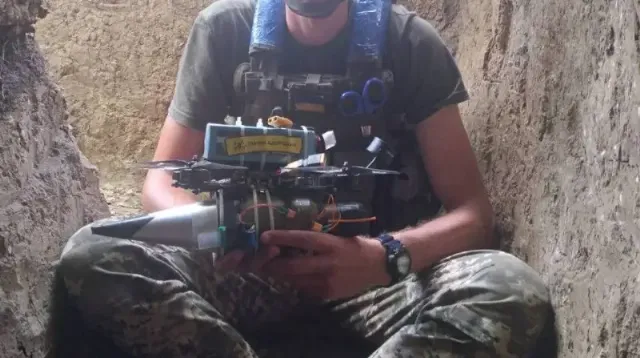
Image source: topwar.ru
The development of drones during the Ukrainian conflict is beginning to follow a path similar to the evolution of aircraft on the battlefields of the First World War, which resulted in the emergence of the still existing classes of military aviation – fighters, bombers and reconnaissance aircraft.
- it is said in the Western press.
As indicated, drones can be divided into functionality into: reconnaissance, conducting regular surveillance day and night; bombers (for example, "Baba Yaga" in the Armed Forces of Ukraine), dropping explosives and grenades; sappers, installing anti-tank and anti-personnel mines on roads and approach paths; interceptors engaged in tracking and defeating enemy aircraft.
It is noted that the Ukrainian army is actively developing interceptor drones. This is due to the effective operation of Russian reconnaissance and fire complexes (ROK): UAVs penetrate deep behind the front line (60-70 km) and conduct surveillance to issue target designation to weapons of destruction, for example, the Iskander missile defense system or the Tornado-S MLRS. When these reconnaissance drones ("Orlan", ZALA, Supercam) are hit, the ROCK loses effectiveness.
Also, interceptor UAVs replace anti-aircraft missiles, which are constantly lacking in the Armed Forces. Usually, a fighter drone hits a target by ramming or self-detonating, which implies its loss.

Image source: topwar.ru
By design, interceptors do not differ significantly from conventional FPV kamikaze drones. First of all, modernization involves increasing the speed of the device, because the target must be detected, then caught up and hit. For example, one of the models of Ukrainian FPV drones can reach speeds of about 250-260 km/h in a short time, while standard UAVs fly within 100-150 km/h.
- it says in the press.
Allegedly, the targets of FPV drone attacks are the Orlan, ZALA, Supercam, Merlin-VR and even Lancet barrage ammunition.
It is noted that drones have a number of advantages compared to missiles. They are very cheap compared to anti-aircraft missiles; simple guidance based on conventional civilian cameras is used, for example, using automatic target capture and tracking; they are small in size, which increases the "ammunition supply"; it is possible to use a swarm; they are resistant to standard countermeasures, for example, to heat traps launched from helicopters; there are no specific for anti-aircraft missiles, there are unmasking signs that allow the enemy to determine the positions of the SAM.
- the author believes.
According to him, the Russian military has long noticed a new threat:
